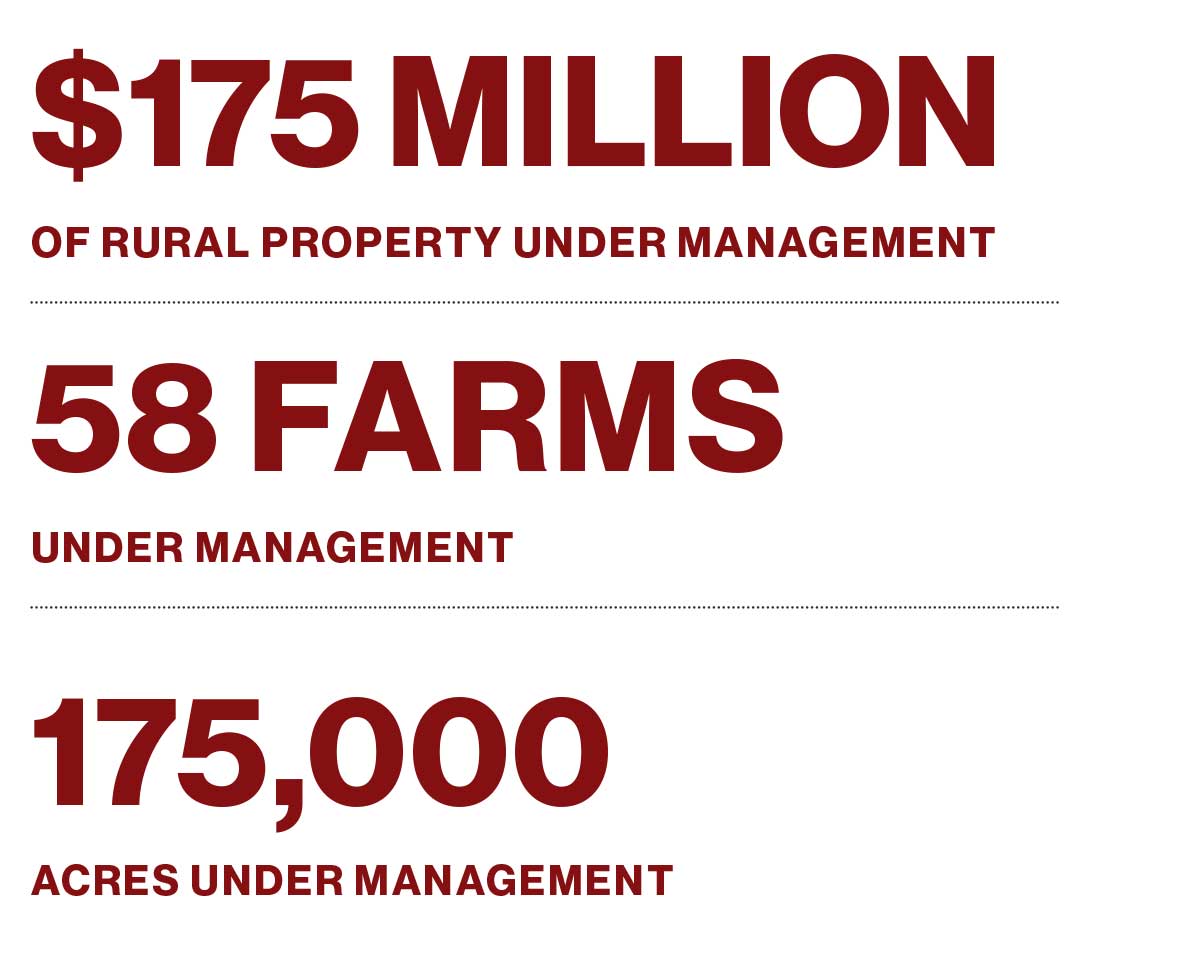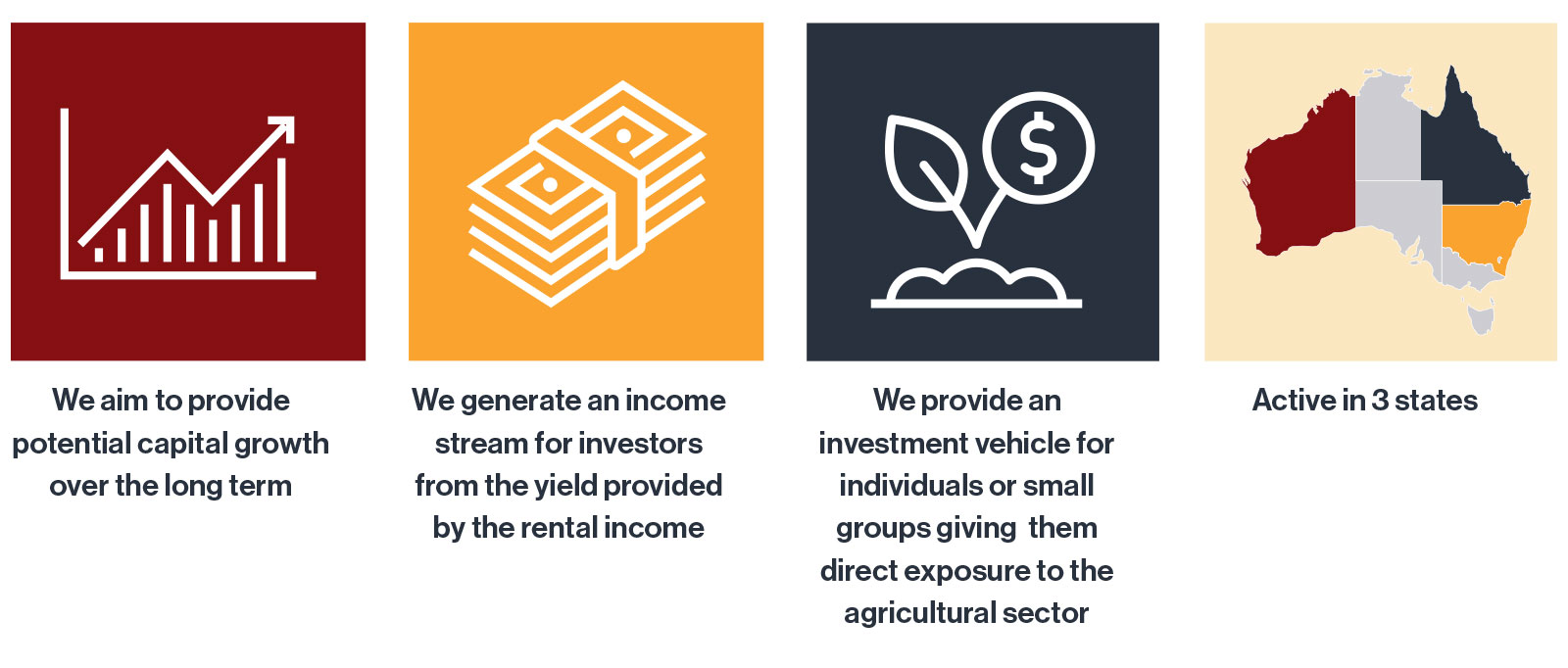
Temora: 02 6977 1333
West Wyalong: 02 6972 2224
Farm Management
Our Services
 Miller & James offer complete property management solutions to investors who see rural property as an attractive asset class.
Miller & James offer complete property management solutions to investors who see rural property as an attractive asset class.
In the first instance, Miller & James identify suitable farms, which meet certain investment criteria and risk parameters. After a ‘ground truthing’ due diligence process, the findings are reported back to the investor. The next step is to set up an entity to hold the asset. Miller & James have close relationships with several law firms, all of whom specialize in rural transactions and foreign investment. Also, at this stage, an accountant needs to be appointed. The solicitor and the accountant work closely together to ensure the optimum investment vehicle is created for the farm investment.
On most occasions, prior to the purchase of the property, Miller & James have already identified a tenant who is interested in a long-term lease of the farm. Miller & James have access to a large pool of quality farmers who are interested in increasing their operations through leasing additional farmland. It is important to take special care in selecting the right tenants. A good tenant is important to ensure your farm will improve in quality, fertility and appearance and ultimately, also in value.
Once the property is purchased, the next stage is the management of the lease for the investor. Miller & James ensures the lease payments are made on time and takes care of the invoicing, collection of GST, and CAPEX issues. If a tenant believes funds need to be spent on improving infrastructure, Miller & James will conduct an on site visit, collect quotes, and then advise the investor on the best way to proceed.
Miller & James also provide annual reports on the cropping program and other relevant facts to the investor. This might include a summary of commodity price trends or a detailed analysis of the weather.
At the end of the lease term, Miller & James will either renegotiate an appropriate new lease price with the existing tenant or find a new tenant.
Leases can be structured in many ways. Miller & James usually recommend five year leases, but they can be for shorter or longer periods. The lease price is often linked to CPI (consumer price index) and will increase on a yearly basis. The lease yield depends on many factors such as, the region where the farm is situated, whether it is a cropping farm or a mixed farm, whether there is expensive infrastructure on the property etc. Lease yields currently range from 4% to 5.3% based on the purchase price. Lease yields have reduced slightly over the last few years, mirroring falling interest rates across the globe.
Miller & James currently manage over $175 million worth of farming assets across Australia on behalf of local and overseas based investors. The farms are in NSW, QLD and Western Australia. The purchased farms include cropping, sheep farms and cattle stations.

Farmland Investment Strategies
When a wealthy person thinks about investing in farmland, they usually picture operating a farm and all the excitement and disappointment that goes with that investment. Producing your own crops or raising cattle has a certain primal appeal which is why rich people often buy vineyards or small cattle breeding operations. If the driver behind such an investment decision is an emotional one, we fully understand it.
However, if the driver for your investment is purely to capture the best return, the correct farmland investment strategy is buying and leasing.
The average return (EBIT earnings before interest and tax) across the Australian farming industry is about 6.5%. The top quartile reaches 10.5%, whilst the lowest quartile is only 2.5%.
 If a foreign investor wants to start their own farming operation, they usually employ a farm management company. The farm management company hires workers and contractors, who do the actual work.
All these additional layers of costs make it nearly impossible to beat or even reach the average of 6.5%. On top of this, there is much more work and due diligence involved from the side of the investor. Additionally, they have to stomach the yearly volatility of the returns which comes hand in hand with farming in Australia.
If a foreign investor wants to start their own farming operation, they usually employ a farm management company. The farm management company hires workers and contractors, who do the actual work.
All these additional layers of costs make it nearly impossible to beat or even reach the average of 6.5%. On top of this, there is much more work and due diligence involved from the side of the investor. Additionally, they have to stomach the yearly volatility of the returns which comes hand in hand with farming in Australia.
The much simpler approach is to buy a farm and lease it to a successful neighbour for a yearly lease in the range of 4.5% to 5.2%.
Over the years we have trialled various farming models. This includes share-farming agreements, (where we received 25% of the harvest proceeds) and employing farm management companies to run the farms on the investors' behalf.
We now have 10 years of data and the conclusion we have come to is that if you want to maximise your returns, the right strategy is to purchase and lease farmland.
Farmland pricing is quite efficient within a region, but there can be large price differences over larger distances.
Currently farmland in Western Australia is valued at roughly only half the price of land in NSW. This is based on the dollar amount you have to spend to purchase the area of land, which produces one ton of wheat.
The wheat belt of NSW had a few profitable years. Farmers rebuilt their equity. Once financial freedom increases, the natural tendency of farming families is to purchase more land.
Western Australia is influenced by different weather patterns. After some average years they have had one of their best years in 2018. We expect cashed up farmers will bid up prices for farmland in WA over the coming years.
Australia is the same size as the USA. Different regions across Australia experience different cycles. The astute investor will always be able to find and capture undervalued farmland somewhere.
Join our mailing list and we guarantee you will be informed of properties before they hit the net.
Miller & James Real Estate 2025 | Privacy Policy | Marketing by Real Estate Australia and ReNet Real Estate Software